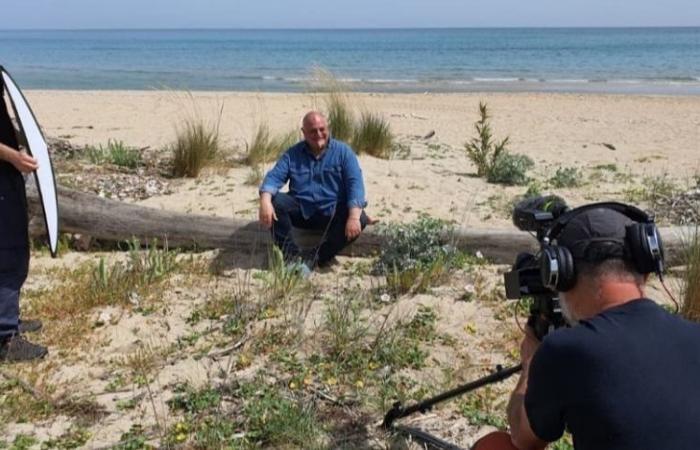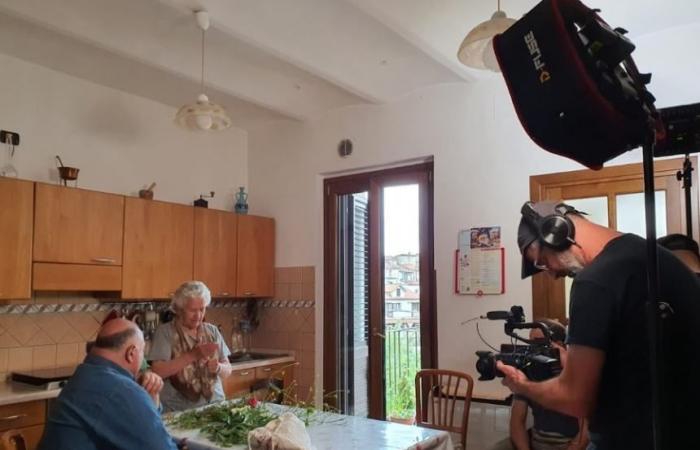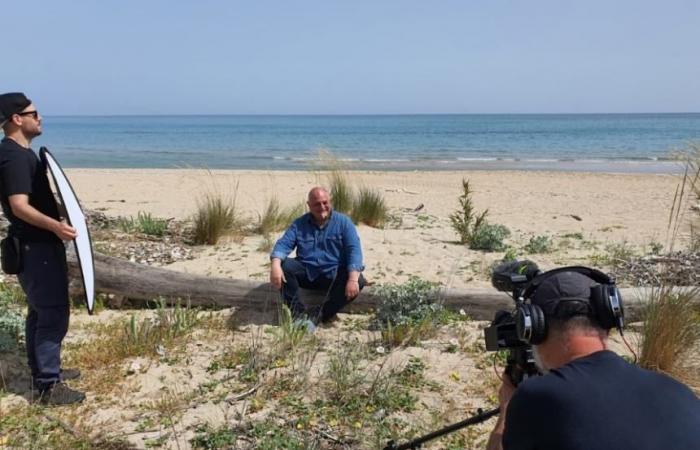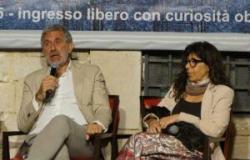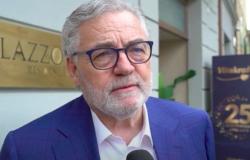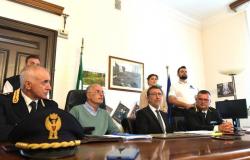GUGLIONESI. The great sheep track L’Aquila-Foggia, from Guglionesi to Petacciato, and then inland, along the Celano-Foggia sheep track, to discover what is still alive and present of the millenary civilization of transhumance, sedimented in the traditions and local economies , in dialects, in religious devotion, in gastronomy and music, of ecological corridors, and cultural crossroads, which as the archaeologist and historian Sabatino Moscati wrote, “have dictated the law of settlement and movement in Molise”.
Having started from Foggia, and from the legendary customs, towards L’Aquila and Gran Sasso, the “Le Via della Lana” caravan is crossing Molise, to write a central chapter of the documentary intended for the national and international television market, signed by Kairostudio , and the director Daniele Di Domenico: a journey of over 240 kilometres, along the tratturo magno and other royal sheep tracks, the grass paths that shepherds have used for centuries, together with millions of sheep, from the summer pastures on the Apennine plateaus in Molise and Abruzzo, to the winter ones on the Tavoliere delle Puglie, which UNESCO has declared an intangible cultural heritage of humanity since 2019.
The aim of telling in a unified way the civilization of transhumance, or rather the complex of seasonal migrations with a wide territorial range through which animals move, following certain natural routes, from plain to mountain regions and vice versa, to exploit the complementarity of pastures.
It was the king who understood the great economic potential hidden in this centuries-old practice Alfonso of Aragonwho decided to establish the Royal Customs of Mena delle Pecore in 1447, first based in Lucera, then moved to Foggia by his son and successor Ferrante. To confirm this intuition, an obligatory stop was Guglionesi, where there are still well-preserved stretches of sheep tracks and numerous sources, fundamental for the shepherds during the transhumance period, and where the tradition of textile arts remains alive, also linked to wool, and therefore to transhumance and in particular that of tombolo. And again Petacciato where the sheep track runs parallel to the sea and its splendid dunes.
Welcoming the Le vie della lana troupe is Bruno Fearassociate professor at the University of Molise, Department of Agriculture, Environment and Food, expert in botany, nature conservation and ethno-botany.
“It still makes a lot of sense today to protect and enhance sheep tracks, even if the economy of transhumance has almost disappeared – explains Bruno Paura -. The sheep track is technically to all intents and purposes a secondary prairie, that is, induced and maintained by intervention and human use, and represents an ecological corridor in areas suited to agricultural agriculture. From a botanical point of view there are no particular and exclusive plant communities, even if the sheep tracks offer a notable ecological ecosystem service, as they enrich the territorial mosaic. locally increasing both vegetal and animal biodiversity of the community, “.
And this, continues Professor Paura, takes on a cultural value: “along the sheep tracks they developed from common traditions, also in the use of plants for both food and medicinal use, for humans and animals. For example the orapi or the cacigno, of the same family as chicory and dandelion, whose name comes from the Latin caseus, testifying that together with cheese it was part of the diet of shepherds and farmers. We also remember the yarrow, a wound plant, which cured wounds, and the plantain used against inflammation and cough, also linked to the daily practices of transhumance and finally the shepherd’s purse, which was also used for decoctions that soothed hangovers. Of fundamental importance were dyeing plants, such as dyers’ chamomile and woad, which were used to dye wool. The use of these plants, another important aspect, is common to all the territories crossed by the sheep tracks, confirming how they had the function of transmitting knowledge”.
As happened in Puglia, and as will happen in Abruzzo, the troupe of Le vie della lana is also exploring other territories, moving away from the route of the L’Aquila-Foggia sheep track, which coincides with the main narrative axis.
In Lucito, in the province of Campobasso, along the Celano-Foggia sheep track, illustrating the tourist potential of the transhumance civilization is Michele Cianciullopassionate about local traditions, and among the animators of “Cammina, Molise!”, which has been offering trekking along the sheep tracks with enormous success for thirty years.
“Molise is crossed by large and important sheep tracks, and here we find the best preserved sections, which have been saved from reintegration, or their disposal, and subsequent disappearance due to agricultural use and overbuilding – explains Cianciullo -. It would therefore be important to multiply efforts for their valorisation, for example by ensuring annual maintenance, also involving neighboring farmers. The cost-benefit ratio would be absolutely positive, and this is demonstrated by the hundreds of people who participate in ‘Cammina, Molise!’, enchanted by the uniqueness and beauty of the landscape designed over the centuries by the practice of transhumance”.
The narrative form of “Le vie della Lana” has already been tested for the first time by Kairostudio in 2022, for the creation of “I Giganti del Mare”, a documentary film that tells the fascinating story of the trabocchi, a journey of 130 nautical miles on a sailing boat, along the coasts of Abruzzo, Molise and Puglia.
It was then broadcast on Raitre, within the Geo programme, totaling an average audience share of over 10%, equal to 1 million viewers, and currently distributed on the Samsung TV platform, in the UK, US, Ireland and Sweden territories , Norway, Finland, Denmark, Holland, Portugal. Kairostudio srl is a film and television production company committed to promoting sustainability issues. Since 2007 he has collaborated with institutions, universities, research centers and companies in Italy and abroad. He has participated in various national and European programs for the governance and development of the territory (PSR, Life Plus, Interreg, Agrip). It has collaborated, among others, with Rai for historical programs such as Geo and SuperQuark and with Rai Kids for the development of content for children, intended for the Rai Yoyo and Rai Gulp channels.
The ways of wool: from Guglionesi to Petacciato, docufilm on the sheep tracks of Molise
TermoliOnLine
The ways of wool: from Guglionesi to Petacciato, docufilm on the sheep tracks of Molise
TermoliOnLine

The ways of wool: from Guglionesi to Petacciato, docufilm on the sheep tracks of Molise
TermoliOnLine

The ways of wool: from Guglionesi to Petacciato, docufilm on the sheep tracks of Molise
TermoliOnLine

The ways of wool: from Guglionesi to Petacciato, docufilm on the sheep tracks of Molise
TermoliOnLine

The ways of wool: from Guglionesi to Petacciato, docufilm on the sheep tracks of Molise
TermoliOnLine

